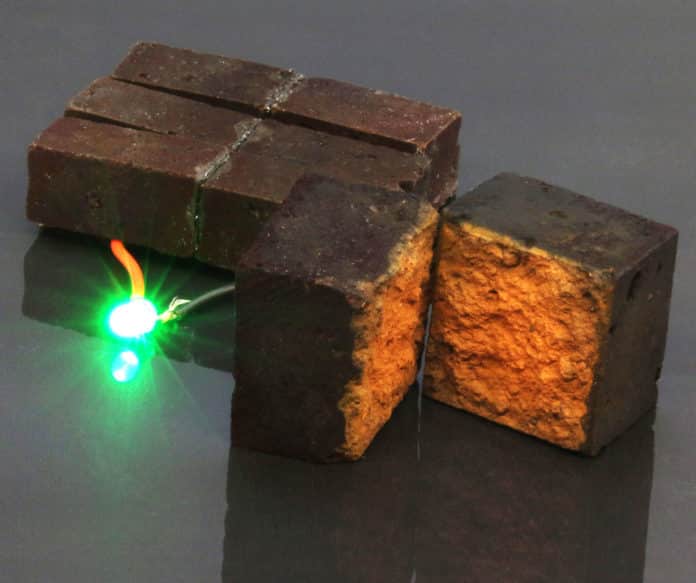Red brick is a universal building material produced by thousand-year-old technology that has seldom served any other purpose throughout history. Typically used for construction and architectural esthetics, red bricks are one of the most durable materials.
The bricks comprised of fused particles of silica (SiO2), alumina (Al2O3) and hematite (α-Fe2O3). The red color of a brick originates from hematite. State-of-the-art energy storage materials are also produced from hematite.
Considering this fact, a new study by Washington University in St. Louis suggested that red bricks can be converted into energy storage units that can be charged to hold electricity, like a battery.
Chemists in Arts and sciences have developed a method to make or modify “smart bricks” that can store energy until required for powering devices. In their study, scientists have shown that a brick directly powers a green LED light.
Julio D’Arcy, assistant professor of chemistry, said, “Our method works with regular brick or recycled bricks, and we can make our bricks as well. The work that we have published in Nature Communications stems from bricks that we bought at Home Depot right here in Brentwood (Missouri); each brick was 65 cents.”
D’Arcy and colleagues, including Washington University graduate student Hongmin Wang, the first author of the new study, showed how to convert red bricks into a type of energy storage device called a supercapacitor.
D’Arcy said, “In this work, we have developed a coating of the conducting polymer PEDOT, which is comprised of nanofibers that penetrate the inner porous network of brick; a polymer coating remains trapped in a brick and serves as an ion sponge that stores and conducts electricity.”
“PEDOT-coated bricks are ideal building blocks that can provide power to emergency lighting. We envision that this could be a reality when you connect our bricks with solar cells—this could take 50 bricks in close proximity to the load. These 50 bricks would enable powering emergency lighting for five hours.”
“Advantageously, a brick wall serving as a supercapacitor can be recharged hundreds of thousands of times within an hour. If you connect a couple of bricks, microelectronics sensors would be easily powered.”
Journal Reference:
- Energy storing bricks for stationary PEDOT supercapacitors, Nature Communications (2020). DOI: 10.1038/s41467-020-17708-1
